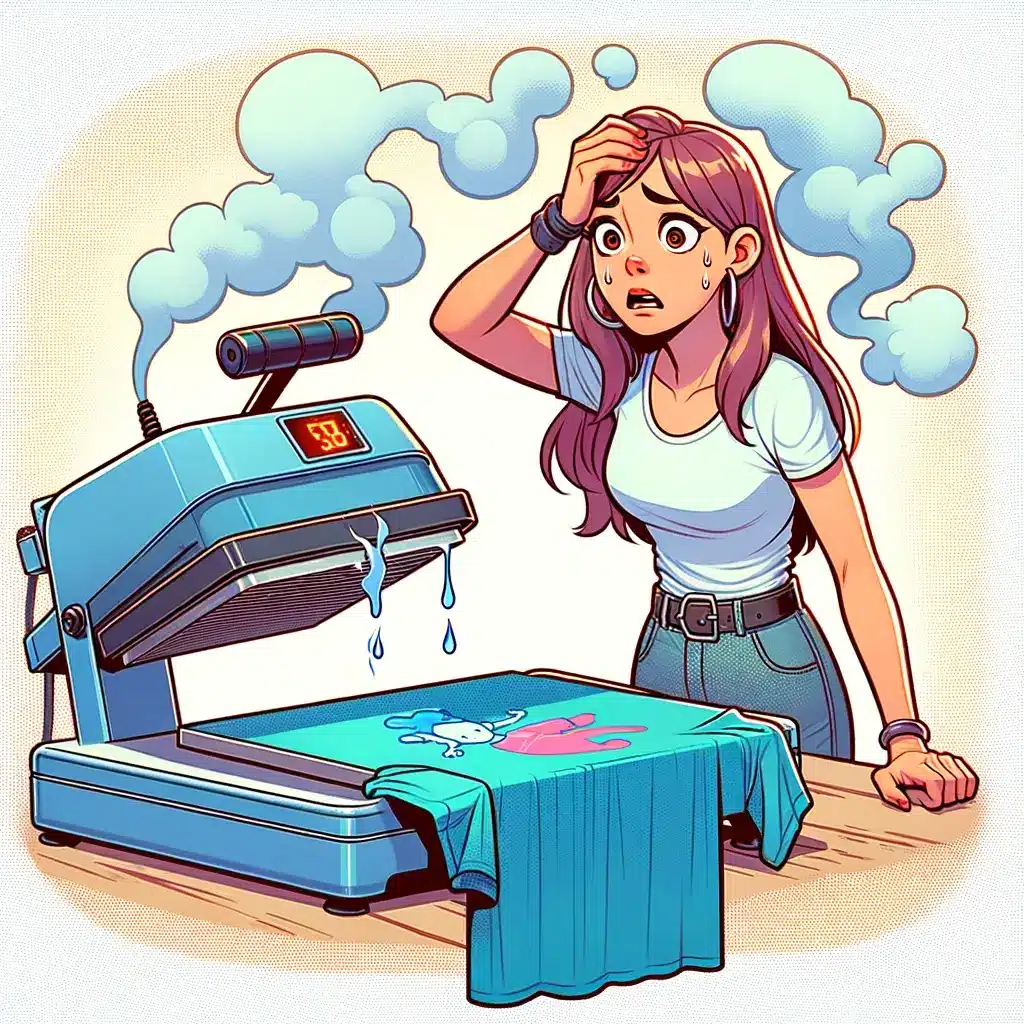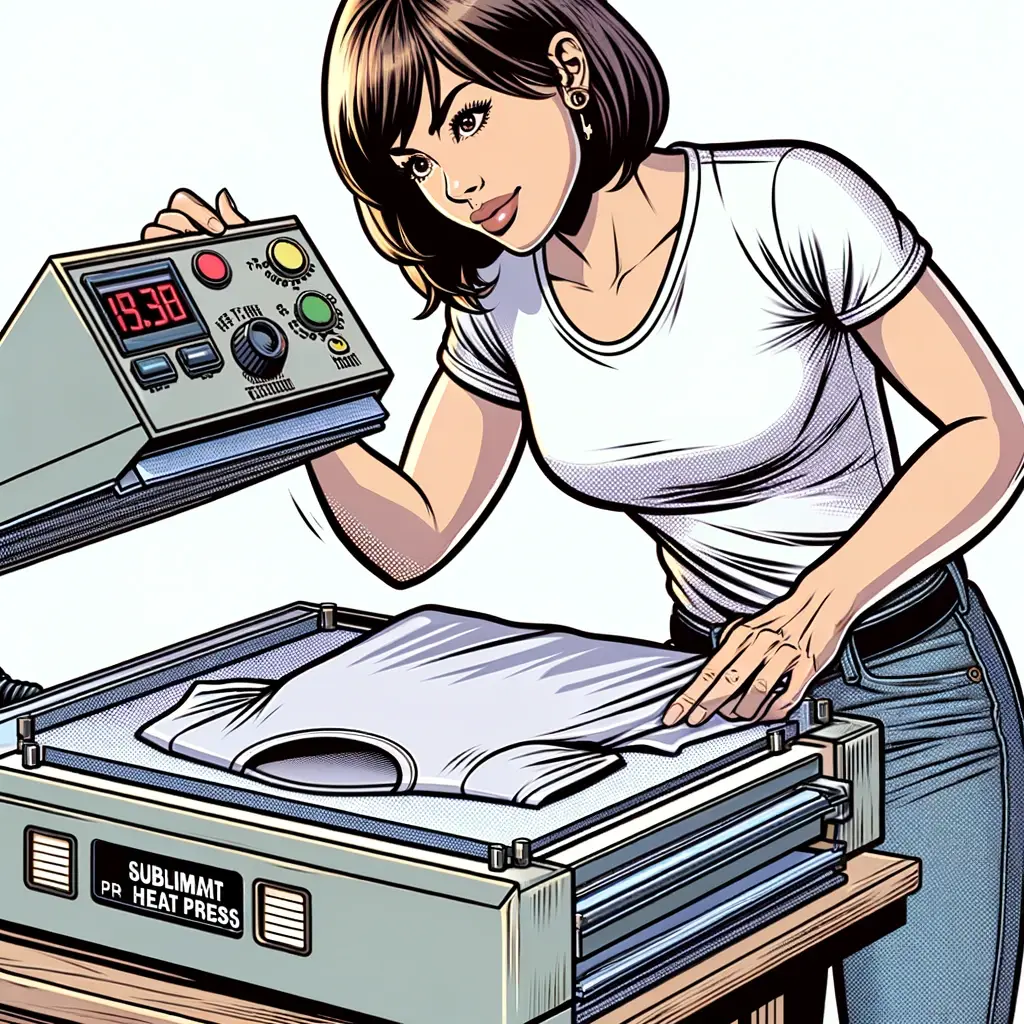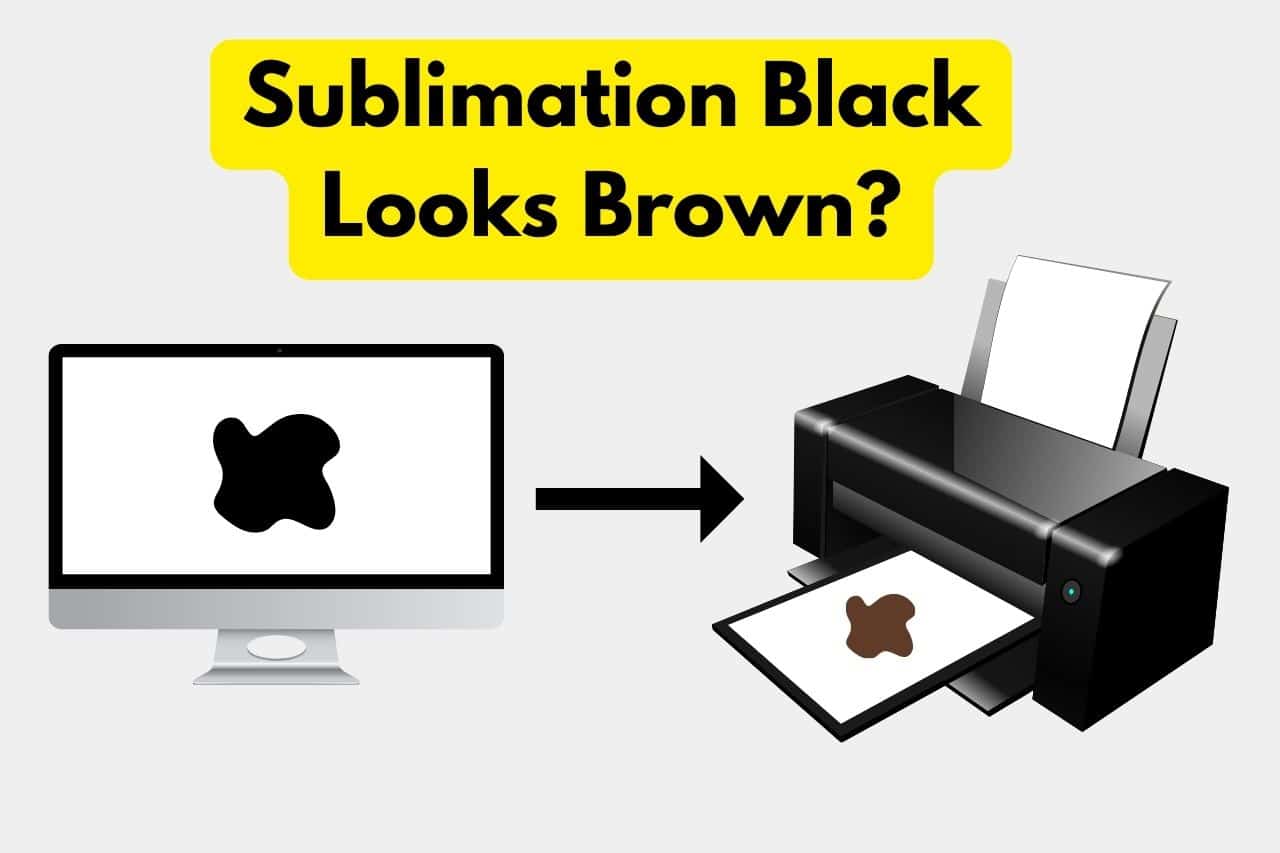After spending time and money creating a perfect sublimation design, few things are more frustrating than printed colors coming out wrong.
The most common complaint is black ink appearing brown or muddy instead of deep, dark black.
This not only looks unappealing but can ruin logos, typography, and other critical design elements. Before you throw up your hands in defeat, let’s get to the bottom of why this happens and practical tips to resolve it.
Read on to unlock rich, flawless true blacks from your sublimation process.
Key Causes Behind Sublimation Black Looks Brown
Pinpointing the root reasons is step one to reversing lackluster prints. Here are the most prevalent causes of sublimation black ending up brown:
1. Excess Yellow and Magenta Saturation
The black dye used in sublimation ink is not a true black. Rather, it contains a formulation of black, yellow, and magenta. Having high levels of the yellow and magenta pigments skews the end result closer to a brown or murky black appearance.

Most printer and design interfaces allow adjusting relative saturation of each color channel. Rebalancing the mixes prevents the brownish cast from developing.
2. Overexposure to Heat and Pressure
The sublimation process itself relies on heat and pressure to gasify dyes temporarily before bonding them into substrate fabrics.
Excessive heat and pressure breaks down ink molecules further, altering their behavior and light absorption properties.

As dyes go through phase transition changes at the molecular level, black tones get imparted with more yellow/red character – turning them muddy brown. This chemical reaction is simply inherent to sublimation physics.
3. Vacuum Issues During Sublimation
Industrial sublimation often utilizes vacuums around heating systems and print platens. Removing air pressure makes it easier for inks to fully vaporize and enter substrate pores when heated. However, vacuum exposure also degrades dyes like excessive heat does.
The intense vacuum and heat alters chemical formulations of colorants. What enters the fabric pores re-solidifies with a markedly browner tone than originally printed.
Adjustments to Restore Deep Black Dyes
While many factors drive sublimation black to appear brown, the good news is it can be remedied with some trial and error. Below are proven techniques to restore rich, neutral blacks:
1. Adjust Temperature Settings
The heating intensity used when pressing sublimation prints makes all the difference. Crank temperatures up from 350°F to 500°F to fully liquefy toners for optimal fabric penetration. This prevents undertones and faded appearance over time.

I suggest trying a starting temp around 370°F and gauge impacts on black density. Bleeding or blown-out prints means you need lower heat settings. If black still seems brownish, gently raise the temp in increments of 10° up to 500°F max. Be cautious not to scorch delicate fabrics!
2. Upgrade Print Resolution
Invest in a higher resolution sublimation printer emitting at least 600 DPI (dots per inch) resolution.

Greater precision translates to crisper definition in prints with pixels perfectly in place.
This enhances black density for bolder distinction from garment fabric beneath.
Low end consumer printers often max out around 300 DPI, leading to muddy blacks. Make the plunge for advanced Epson, Ricoh, or Sawgrass printers engineered for commercial sublimation. Match with high density inks for stunning graphical prints.
3. Choose The Right Sublimation Paper
Don’t overlook the paper choice when troubleshooting sublimation black issues. Lightweight sheets below 80 gsm can hinder ink transfer, resulting in faded or bleeding prints. Look for specialty sublimation papers rated 80 gsm and above.

Improved thickness and coating allows deeper ink absorption with less spread. This amplifies the richness of black without thinness or bleeding. Brands like Joto and Forever offer optimal 100+ gsm sublimation sheets purpose-built to make colors pop.
4. Adjust Printer’s Color Management Settings
Color management in printers helps ensure accurate and consistent color reproduction, including for black.
Here’s a quick explanation of how it prevents black from printing out brown during sublimation printing:
Sublimation printing uses specialty inks that turn into a gas when heated and bond with polymers in the print medium (usually polyester fabrics). This can make color accuracy more difficult.
Printers have built-in color management processes and profiles that take into account the specific inks and papers being used. Profiles for sublimation printers are calibrated for the unique inks and process.
The color management and printer profiles compensate for factors that can cause inaccurate colors, like differences in ink formulations across printer models, the types of fabrics used, variation in heat presses, etc.
Specifically for black, sublimation inks require very dense, saturated black ink. Printer profiles are optimized to lay down enough ink to produce a truly black color rather than a washed-out brown.
Things like poor quality refilled ink cartridges or failing to set the correct print mode/profile for the fabric and inks being used can override the color management and output muddy brown blacks instead. But with proper calibration and color management enabled, rich blacks can be maintained.
The goal is to account for all the complex variables so the printer can still produce accurate colors, including black, for sublimation transfers. This helps prevent issues like a brownish cast-to-black elements in the printed designs.
FAQs Around Sublimation Black Looks Brown
Beyond turning brown in the first place, sublimation printers can cause other headaches around black specifically:
Why does my sublimation black look pixelated?
Low resolution outputs combined with poor image enlargement cause blocky, jagged prints. Invest in at least a 600 DPI sub printer and avoid blowing up artwork past intended sizes.
How do I stop black ink from bleeding when sublimating?
Switch to heavier 80+ gsm sublimation paper and tweak printer ink saturation lower. This reduces spread leading to muddy colors. Checking for printhead clogs helps too.
Why does black look faded after washing sublimated items?
Incomplete ink bonding from insufficient temp or time when pressing leads to fading overtime with laundering. Lengthen press duration to 60+ seconds and try 10°F higher heating to fully fuse prints.
What causes ghosting in sublimation black prints?
Ghosting refers to faint duplications of an image, often from paper debris stuck fusing into fabrics. Ensure pristine transfer paper storage and lint removal between pressings. Slowly peel warm prints post-pressing as well.
How can I tell if my sublimation ink has expired?
Sawgrass inks feature printed expiration dates, typically lasting around one year unopened. Other brands may not indicate this but degraded prints suggest old ink needing replacement if head cleanings don’t improve quality.
Key Takeaways
Perfecting flawlessly neutral, professional blacks in sublimation takes some nuance but delivers stunning graphic results once mastered!
Use the tips above to methodically hone process parameters until achieving consistently optimum prints. Don’t settle for lackluster blacks that could make or break your custom apparel designs and merchandise.
With the right adjustable density printer, 100 gsm transfer paper, high temp heat press, and properly balanced imagery, expect magnificently rich, true blacks that make designs pop just as envisaged.
Please drop any other sublimation questions below!




